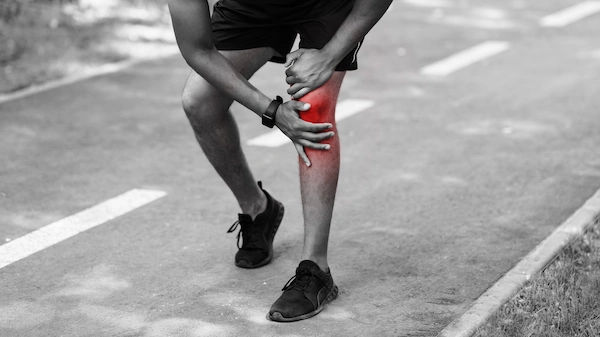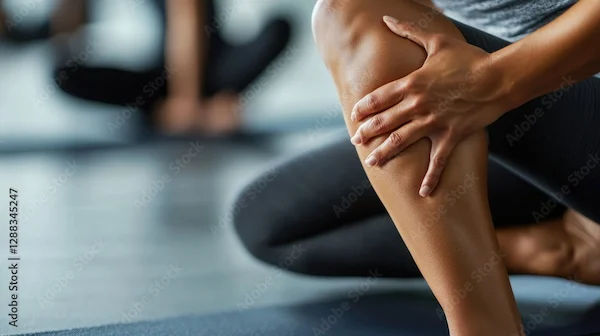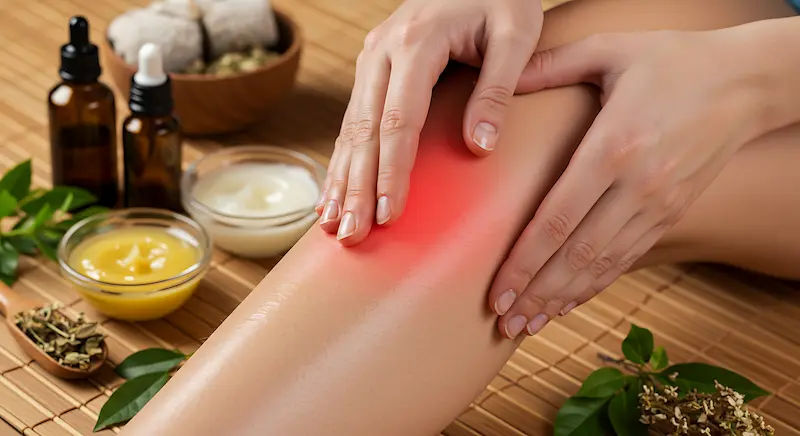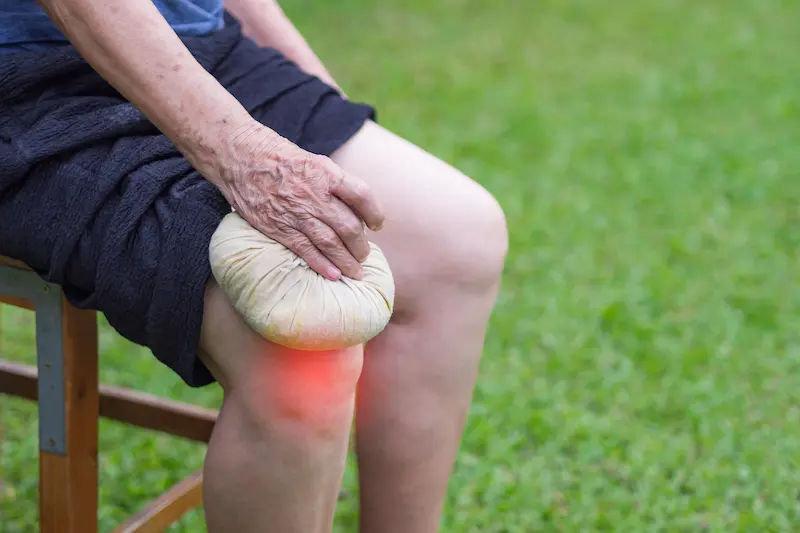Guide to the 5 Common Reasons Behind Knee Pain
Discover the 5 most common reasons behind knee pain, from osteoarthritis to ligament injuries. Learn symptoms, causes, treatments, and when to see a doctor.


Introduction: Understanding Your Knee's Cry for Help
Knee pain is an incredibly common complaint that affects people of all ages and activity levels. Whether it's a sharp, stabbing sensation when you climb stairs or a dull, persistent ache that lingers after a workout, that discomfort is your body's way of sending a signal. Ignoring it can often lead to worsened injury and longer recovery times. This complex joint, bearing the brunt of our body weight while facilitating movement, is susceptible to a variety of issues. This article will demystify the five most common reasons behind knee pain, breaking down each condition from osteoarthritis to ligament sprains. We'll explore their unique symptoms, typical causes, and both immediate and long-term management strategies. Our goal is to empower you with knowledge, helping you understand what your knee pain might mean and when it's crucial to seek professional guidance from a platform like Apollo24|7 to get back on your feet, pain-free.
1. Osteoarthritis: The Wear-and-Tear Culprit
What is Osteoarthritis?
Often called "wear-and-tear" arthritis, osteoarthritis (OA) is the most common form of arthritis in the knee. It is a degenerative condition where the protective cartilage that cushions the ends of your bones wears down over time. Imagine the cartilage as a smooth, Teflon-like coating on the bone ends within your joint. With OA, this coating gradually erodes, becoming rough and frayed. Eventually, if the cartilage wears away completely, you may be left with bone rubbing on bone, which causes significant pain and stiffness.
Who is Most at Risk?
While aging is the primary risk factor, it's not an inevitable part of getting older. Other factors significantly increase risk:
Age: People over 50 are more susceptible.
Weight: Excess body weight puts additional stress on knee joints with every step.
Genetics: A family history of OA can predispose you to it.
Previous Injury: A past knee injury, even one that happened years ago and seemed to heal, can increase the risk of OA in that joint.
Repetitive Stress: Jobs or sports that involve prolonged kneeling, squatting, or heavy lifting can contribute.
Management and Relief Strategies
While there's no cure for OA, its symptoms can be effectively managed. Pain on the inner side of the knee is often associated with medial compartment osteoarthritis. Strategies include:
Weight Management: Losing even a small amount of weight can dramatically reduce stress on the knee.
Low-Impact Exercise: Swimming, cycling, and elliptical training keep joints mobile without excessive impact.
Physical Therapy: A therapist can teach exercises to strengthen the muscles around the knee, providing better stability and shock absorption.
Medication: Over-the-counter anti-inflammatories can help manage pain and inflammation.
If your knee pain is persistent and accompanied by significant stiffness, especially in the morning, it's wise to consult a doctor. You can consult a doctor online with Apollo24|7 for an initial evaluation and personalised management plan.
Consult an Orthopaedist for the best advice
2. Patellofemoral Pain Syndrome (Runner's Knee)
The Mechanics of Runner's Knee
Patellofemoral pain syndrome (PFPS) is an umbrella term for pain at the front of the knee and around the kneecap (patella). It's common among athletes but can affect anyone. The pain originates from the patella not tracking smoothly in the femoral groove as the knee bends and straightens. This misalignment irritates the cartilage and the surrounding structures.
Common Triggers and Activities
PFPS is often an overuse injury but can also be caused by muscle imbalances or weaknesses.
Overuse: A sudden increase in running mileage or intensity.
Weak Muscles: Weak quadriceps (especially the vastus medialis obliquus or VMO) and glutes fail to stabilise the kneecap properly.
Biomechanics: Flat feet or overpronation can alter leg alignment and stress the knee.
Activities: Pain is typically worse when walking downstairs, downhill, after sitting for long periods ("theater sign"), or during squats and lunges.
Corrective exercises for knee pain
The cornerstone of treating Runner's Knee is corrective exercises for knee pain that restore balance:
Strengthening: Focus on the glutes, hips, and quadriceps. Clamshells, hip bridges, and straight leg raises are excellent starters.
Stretching: Keep the IT band, hamstrings, and calves flexible.
RICE: Rest, Ice, Compression, and Elevation can help manage acute pain and inflammation.
A physical therapist can provide a tailored exercise regimen. If your condition does not improve after trying these methods, book a physical visit to a doctor with Apollo24|7 to rule out other issues like chondromalacia.
3. Meniscus Tears: The Cartilage Shock Absorber
How Does a Meniscus Tear Happen?
The menisci are two C-shaped pieces of tough, rubbery cartilage that act as shock absorbers between your thighbone and shinbone. A meniscus tear is a common knee injury. The classic mechanism is a traumatic, twisting injury while the foot is planted and the knee is bent—common in sports like football or basketball. People often report hearing or feeling a "pop" at the time of the injury.
Degenerative vs. Traumatic Tears
It's important to distinguish between tear types:
Traumatic Tears: Occur in younger, more active individuals due to a specific injury.
Degenerative Tears: Occur in older adults as part of the aging process. The meniscus weakens and wears thin, making it susceptible to tearing from even a minor movement, like awkwardly stepping off a curb.
Treatment options for a torn meniscus
Symptoms of a torn meniscus include pain, swelling, stiffness, and a catching or locking sensation in the joint. Treatment options for a torn meniscus depend on the tear's size, location, and the patient's age.
Conservative Treatment: For small tears on the outer edge (which has a blood supply), the RICE protocol, anti-inflammatory medication, and physical therapy are often successful.
Surgical Treatment: Larger tears or those that cause mechanical symptoms like locking may require arthroscopic surgery to either repair the tear or trim away the damaged piece.
4. Ligament Injuries: The Stability Compromisers
The ACL, MCL, PCL, and LCL Explained
Ligaments are strong, fibrous bands that connect bones to other bones, providing stability to the knee. The four primary ligaments are:
ACL (Anterior Cruciate Ligament): Controls rotation and forward movement of the shin bone. The most commonly injured ligament.
MCL (Medial Collateral Ligament): Provides stability to the inner knee.
PCL (Posterior Cruciate Ligament): Controls backward movement of the shin bone.
LCL (Lateral Collateral Ligament): Provides stability to the outer knee.
The "Pop" Heard Round the Knee
An ACL tear is a severe injury often accompanied by a loud "pop" or popping sensation. The knee may give out from under you, and significant swelling usually occurs within hours. What does an ACL tear feel like? Patients describe intense pain, a feeling of instability, and a loss of full range of motion. MCL tears are often caused by a direct blow to the outside of the knee and can cause pain on the inner side of the knee.
From RICE to Surgery: The Recovery Path
Immediate treatment always involves the RICE method. Diagnosis is typically confirmed via MRI. While some MCL tears can heal with bracing and physiotherapy, a complete ACL tear often requires reconstructive surgery, especially for athletes who wish to return to pivoting sports, followed by an extensive 6-9 month rehabilitation program.
5. Tendinitis: The Overuse Inflammation
Patellar Tendinitis (Jumper's Knee)
Tendinitis involves inflammation or irritation of a tendon—the thick fibrous cords that attach muscles to bones. Patellar tendinitis affects the tendon connecting your kneecap to your shinbone. It's common in athletes whose sports involve frequent jumping (basketball, volleyball), hence the nickname "jumper's knee." The pain is usually localised to the spot just below the kneecap.
Iliotibial (IT) Band Syndrome
The Iliotibial (IT) band is a thick band of fascia that runs from your hip down the outside of your thigh and attaches to your shinbone. IT Band Syndrome occurs when this band becomes tight and inflamed, rubbing against the outer bone of the knee. It's a leading cause of sharp pain on the outer side of the knee in runners and cyclists.
Best ways to treat knee inflammation
Treatment for tendinitis focuses on reducing inflammation:
Rest: Avoid activities that trigger the pain.
Ice: Apply ice to the area for 15-20 minutes several times a day.
Stretching and Foam Rolling: Gently stretching the IT band, quads, and hamstrings can provide relief.
Anti-inflammatory Medication: NSAIDs like ibuprofen can help.
For persistent cases, a doctor may recommend physical therapy or corticosteroid injections.
When to See a Doctor: Don't Ignore These Signs
While minor aches may resolve with self-care, consult a doctor if you experience:
An inability to bear weight on your knee.
Significant swelling that doesn't improve with ice and elevation.
An obvious deformity in your leg or knee.
A popping or crunching sound accompanied by pain.
Instability or the feeling that your knee is "giving way."
Knee pain that persists beyond two weeks despite home care.
Signs of an infection, such as fever, redness, warmth, and significant pain.
If symptoms persist beyond two weeks, consult a doctor online with Apollo24|7 for further evaluation. They can assess your symptoms, provide initial guidance, and refer you for imaging or an in-person visit if necessary.
Conclusion: Taking the Next Step Toward Pain-Free Knees
Knee pain can be a frustrating and limiting experience, but understanding its common causes is the first powerful step toward recovery. From the gradual wear of osteoarthritis to the sudden trauma of a ligament tear, each condition has its own story and solution. Remember, effective management often combines self-care strategies like the RICE method and targeted exercises with professional medical advice. Don't resign yourself to a life of discomfort. Use this guide to identify potential causes, but always prioritise a proper diagnosis. Your knees carry you through life—they deserve expert care. Take action today by listening to your body, implementing these tips, and seeking professional help to get back to moving with comfort and confidence.
Consult an Orthopaedist for the best advice
Consult an Orthopaedist for the best advice

Dr. Alla Pranay
Orthopaedician
9 Years • MBBS , M S ORTHOPAEDICS, FIJR(ROBOTIC AND JOINT REPLACEMENT),ARTHROSCOPIC AND SPORTS MEDICINE (SHOULDER,KNEE AND ANKLE)
Hyderabad
Apollo Hospitals Jubilee Hills, Hyderabad
(275+ Patients)

Dr. Nallu Shanthan Koushik Reddy
Orthopaedician
9 Years • MBBS, MS(ORTHOPEDICS),FIJR,FIAS.
Hyderabad
Apollo Hospitals Jubilee Hills, Hyderabad

Dr Dayakar Babu Jakkula
Orthopaedician
3 Years • MBBS, MS Ortho, FIJR, FELLOWSHIP in ARTHROPLASTY and ROBOTIC ASSISTED SURGERY.
Hyderabad
Apollo Hospitals Jubilee Hills, Hyderabad
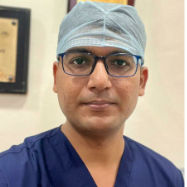
Dr Vikas P Birla
Orthopedics-Sports Medicine
13 Years • MBBS, DNB, MNAMS, Fellowship in Shoulder and Sports Injury
Delhi
Apollo Hospitals Indraprastha, Delhi

Dr. Anil Pradeep Jadhav
Orthopaedician
23 Years • MBBS MS (Ortho)
Nashik
Apollo Hospitals Nashik, Nashik
(25+ Patients)
More articles from Knee pain
Frequently Asked Questions
1. What causes sharp pain in the knee when bending?
Sharp pain when bending can be caused by several issues, including a meniscus tear (if it feels like a catch or lock), patellofemoral pain syndrome, advanced osteoarthritis where bone spurs are present, or a loose piece of cartilage floating in the joint.
2. Can knee pain be related to my back or hip?
Absolutely. This is known as referred pain. A pinched nerve in the lower back (e.g., sciatica) or hip joint problems like arthritis can often manifest as pain in the knee, even if the knee itself is perfectly healthy.
3. I didn't injure it, so why do I have sudden knee pain without injury?
Sudden pain without a traumatic injury is often linked to degenerative conditions. A piece of cartilage breaking off, a degenerative meniscus tear, a flare-up of gout (a form of arthritis caused by crystal deposits), or the onset of inflammatory arthritis like rheumatoid arthritis can all cause sudden, severe pain.
4. Are there any effective home remedies for knee inflammation?
Yes, the RICE protocol (rest, ice, compression, elevation) is the most effective initial home remedy. Some people find topical anti-inflammatory gels helpful. While gentle movement is good, avoid activities that aggravate the pain. Apollo24|7 offers convenient home collection services for tests like vitamin D or HbA1c which can be relevant if metabolic issues like gout are suspected.
5. What are the best exercises for knee pain?
Low-impact strengthening and stretching exercises are best. Focus on:
- Strengthening: Straight leg raises, clamshells, mini squats, and hip bridges.
- Stretching: Hamstring stretches, calf stretches, and quad stretches.
Always avoid exercises that cause pain and consider consulting a physical therapist for a personalised plan
